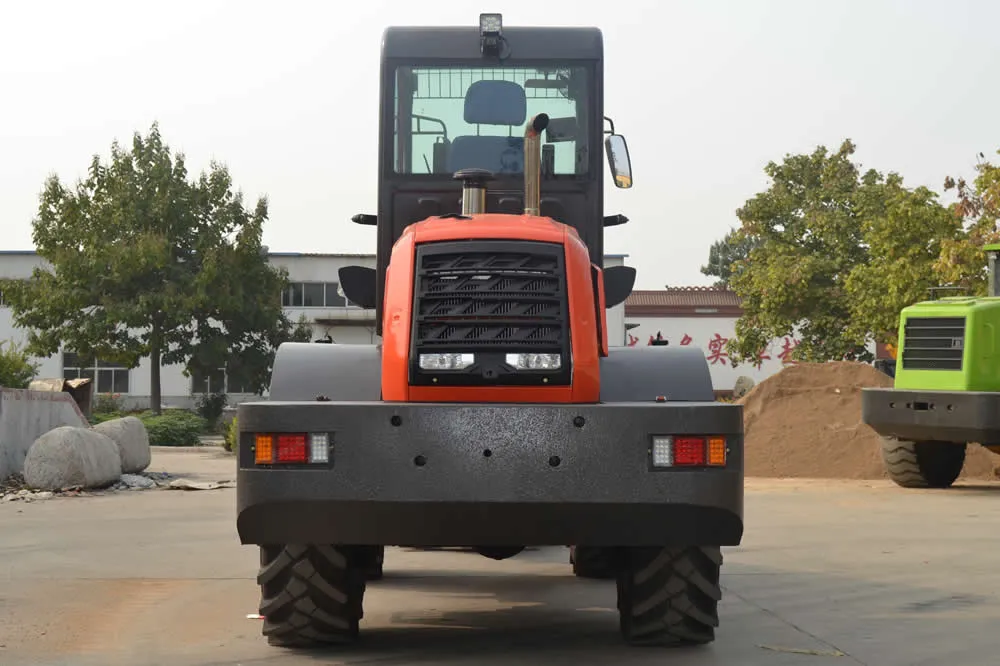Telescopic loaders, as a type of high-efficiency construction machinery, play an increasingly important role in construction, logistics, and disaster relief due to their superior lifting height and flexible working radius. They are widely used in high-altitude operation scenarios such as construction, mining, and ports. Thanks to their unique telescopic boom design, telescopic loaders can provide a greater working range and efficiency in high-altitude environments. However, improper operation during high-altitude operations can lead to serious safety accidents. Therefore, understanding and adhering to safety precautions for high-altitude operations is crucial to ensuring the safety of equipment, personnel, and the working environment.

1.1 Telescopic Boom Structure: Telescopic loaders utilize a telescopic boom and bucket system, allowing the boom length to be extended or retracted according to operational needs to adapt to different working heights and spaces.
1.2 Power System: Typically equipped with a powerful hydraulic system, providing lifting, extension, and retraction functions for the telescopic boom.
1.3 Working Range: The working range for telescopic loaders is typically 3-10 meters, or even higher, effectively meeting the needs of high-altitude material handling in construction projects.
2.1 Safety Inspection Before Operation
Equipment Inspection: Before commencing high-altitude operations, a comprehensive inspection of all systems of the telescopic loader must be conducted, especially the hydraulic system, control system, and steering system, ensuring there are no oil leaks, damage, or loose parts. A thorough inspection of the telescopic boom structure is necessary before operation, focusing on the hydraulic cylinder seals, boom welds, and pin wear.
Outrigger Stability: Ensure the loader's outriggers are fully extended and stably grounded. The stability of the outriggers directly affects operational stability; any instability may lead to rollover or fall accidents. For lifting heights exceeding 6 meters, it must be confirmed that the tilt sensor and dual braking mode are activated.
Work Platform Inspection: If the loader is equipped with a work platform, ensure that the platform's safety railings and protective devices are intact and capable of withstanding the expected load. Simultaneously verify the response sensitivity of the load-sensitive hydraulic system to ensure it can automatically adjust flow distribution according to actual working conditions and maintain lifting stability.
2.2 Operator Training
Professional Operating Certificates: High-altitude operations require specially trained personnel with valid operating certificates.
Emergency Plans and Operating Manuals: Operators should be familiar with emergency stop procedures, fire emergency measures, and equipment malfunction handling methods.
2.3 Safe Operation During Work
Reasonable Load Control: The telescopic boom has a limited load capacity. Overloading must be avoided during operation, especially during extension or raising, as excessive load may cause equipment overturning or boom damage.
Avoid Sudden Movements: During high-altitude operations, avoid sudden lifting, extending, and rotating movements. Operation should be as smooth as possible. Excessive movement may cause equipment instability.
Maintain Appropriate Working Height: When working at height, keep the boom in the lowest stable position as much as possible, avoiding excessive extension or height to prevent potential risks to personnel and equipment.
Collision Prevention: When working at height, ensure the telescopic boom does not collide with buildings or other obstacles. If necessary, establish warning signs or protective zones to prevent misoperation.
2.4 Impact of Weather Conditions
Strong Winds: High-altitude operations are prohibited when wind speeds exceed the specified safe limits. Strong winds significantly affect the stability of the loader, especially when the telescopic boom is extended.
Thunderstorms: Avoid operating during thunderstorms. As a metal structure, the loader is susceptible to safety hazards from lightning.
Rain and Snow: Rain and snow make the ground slippery, increasing operational risks. Therefore, avoid high-altitude operations in such environments.
2.5 Post-Work Operation Procedures
Lowering the Telescopic Boom: After completing the work, the operator should gradually lower the telescopic boom and ensure the loader is stable to prevent incomplete lowering.
Equipment Cleaning and Maintenance: Clean the telescopic loader, removing any debris, accumulated mud, or dust to ensure the equipment is in good working condition.

3.1 Emergency Response Plan
When the equipment triggers an overload alarm, lifting operations should be stopped immediately, and the machine should be slowly lowered to a safe height. In case of hydraulic system failure, the emergency braking procedure should be activated immediately, utilizing dual braking modes to achieve a smooth stop.
3.2 Systematic Maintenance
Establish a system for regularly checking the cleanliness of hydraulic oil, cleaning the return oil filter at least once a month. Lubricate the telescopic boom rail slider weekly to ensure smooth boom extension and retraction without jamming.
Telescopic loaders possess powerful working capabilities in high-altitude operations, but they also present certain operational risks. Accidents can be effectively avoided through rigorous equipment inspection, professional operator training, correct operating procedures, and reasonable weather assessment. Only by constructing a comprehensive safety system covering equipment inspection, standardized operation, and emergency handling can the engineering value of this high-efficiency equipment be maximized. It is recommended that each user unit develop personalized safety operating procedures based on this guideline to continuously improve the level of safety management for high-altitude operations. In future engineering operations, strictly adhering to the safety operating procedures for working at heights is an important guarantee for ensuring the safety of personnel, equipment, and the environment.